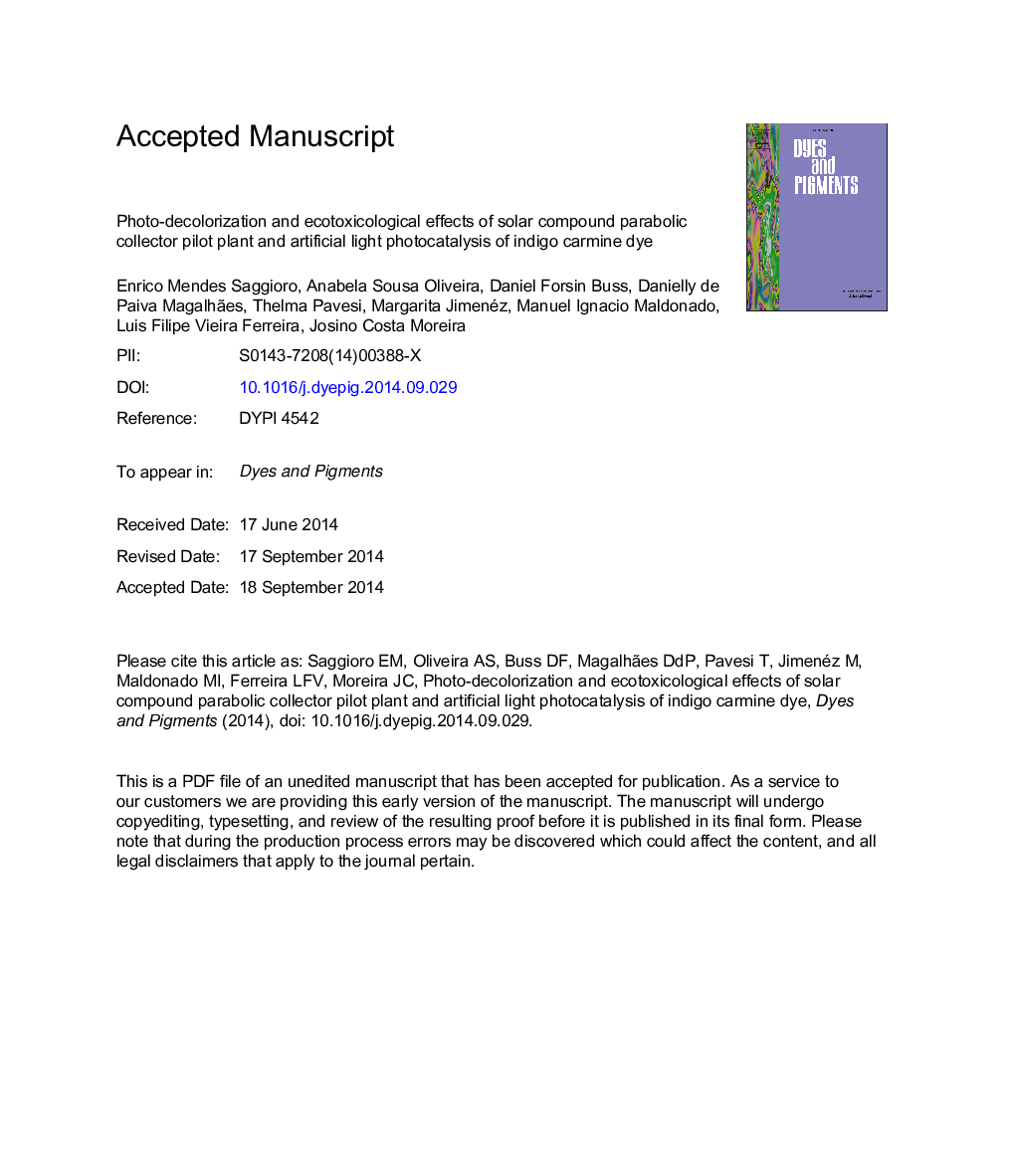| Article ID | Journal | Published Year | Pages | File Type |
|---|---|---|---|---|
| 6600375 | Dyes and Pigments | 2015 | 53 Pages |
Abstract
The aim of this study was to analyze the photocatalytic degradation of C.I. Food Blue 1 under artificial and solar irradiation using titanium dioxide and to evaluate the ecotoxicity of the photodegradation products in organisms of two different food chain levels. Three different artificial-light and geometric photoreactors were evaluated for the ideal amount of catalyst and UV-light time irradiation. The optimized experiments were performed in a solar compound parabolic collector pilot plant with different water matrices (distilled water, freshwater, synthetic and real MWWTP) at Plataforma Solar de AlmerÃa. Photodegradation of the indigo dye was followed by UV-Vis spectroscopy, high performance liquid chromatography, total organic carbon and ion chromatography. Solar pilot plant photocatalysis was efficient for different water matrices but the photodegradation was found to be somewhat slower for the more complex matrixes. Ecotoxicological evaluation with Daphnia similis and Pseudokirchneriella subcapitata showed that photodegradation products were more toxic than untreated indigo carmine and that titanium residues affected the two tested species.
Related Topics
Physical Sciences and Engineering
Chemical Engineering
Chemical Engineering (General)
Authors
Enrico Mendes Saggioro, Anabela Sousa Oliveira, Daniel Forsin Buss, Danielly de Paiva Magalhães, Thelma Pavesi, Margarita Jimenéz, Manuel Ignacio Maldonado, Luis Filipe Vieira Ferreira, Josino Costa Moreira,
